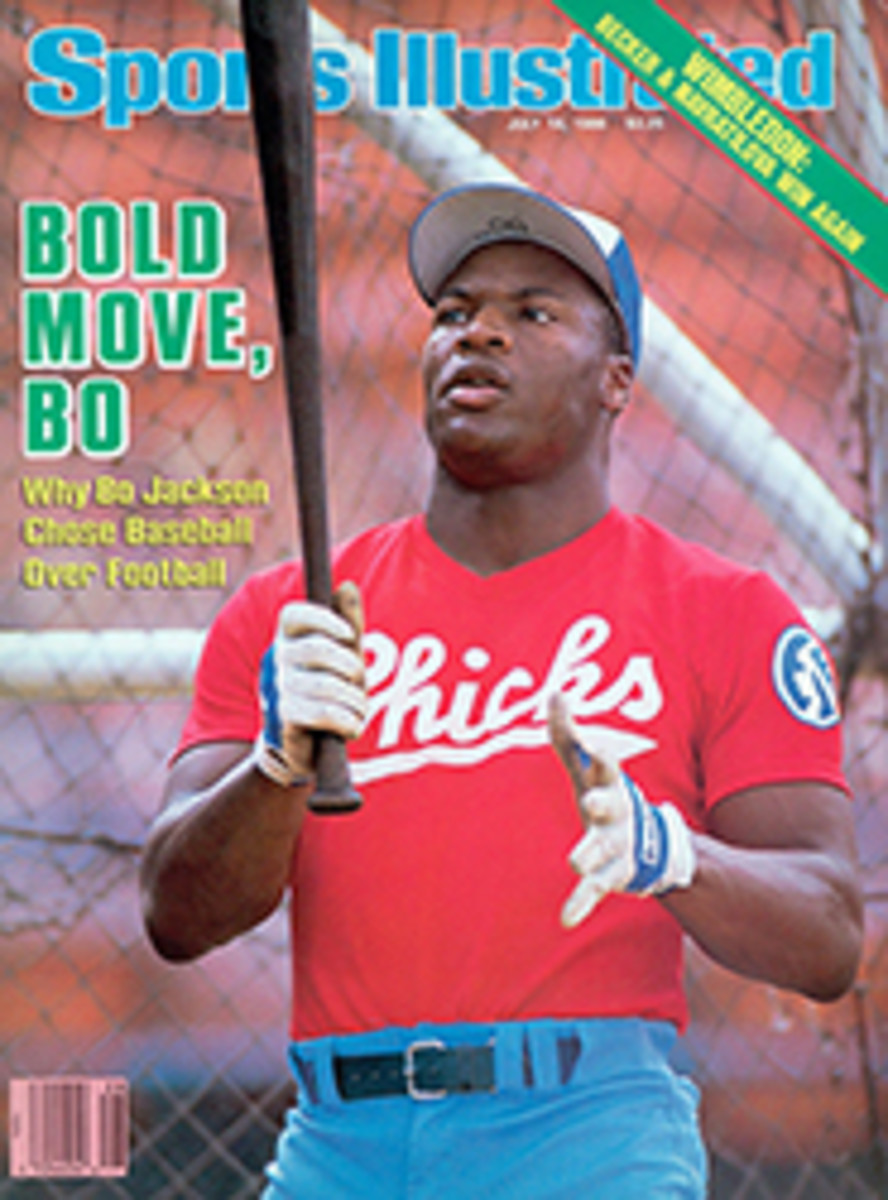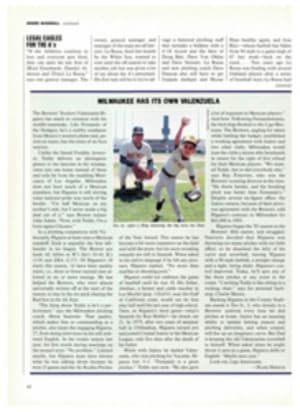
WHEN TOMAHAWK SANK, THE MACKINAC RACE BECAME A MATTER OF SURVIVAL
Sunset and evening star,
And one clear call for me!
And may there be no moaning of the bar,
When I put out to sea....
TENNYSON
Crossing the Bar
Charlie Steigerwald had a premonition about 10 minutes before it happened.
"Where are the flares?" he asked Tom Lowry, owner and skipper of Tomahawk.
"Portside drawers, in the forepeak. Why?"
"I don't know. Just wanted to find out.... And the life jackets?"
"Underneath the forepeak bunks."
It was asphalt black that night, Sunday, July 21, 1985, at the top of Lake Huron in the 61st Port Huron (Mich.) to Mackinac Island Yacht Race—the Kentucky Derby of freshwater yachting. The largest fleet in the race's history, 305 yachts, was strung out all over the second and final leg of the 259-mile Lake Huron course. The weather at 10 p.m. was nasty and getting nastier.
This was only my second Mackinac, and it was a rough ride. The seas were as high as a 1½-story building; the winds on the nose of our sturdy C&C 35 were between 35 and 40 knots; and the combination of wind noise and the relentless pounding of the waves on the hull made casual conversation impossible. We knew that the night was not going to get any calmer, but with a double reef in the mainsail and a veteran crew on board, we figured that we were prepared for just about anything.
Suddenly the unthinkable happened. A particularly loud impact of boat and wave was followed by Mike Cazabon's shrill scream from below in the cabin, "There's a hole in the boat!"
"Oh, god!" shouted Skipper Lowry, conveying equal parts prayer and alarm. "Can you fix it?"
"No! It's too big. It's coming in too fast."
The cold, turbulent waters of Lake Huron were suddenly pouring into Tomahawk through a gaping hole on the starboard side well below the waterline. The hole was in the vicinity of where some early-spring repairs had been made.
I was on the high side, near the cabin. The boat was suddenly a whirl of frenzied activity, with Lowry hollering commands, and others following with orders of their own.
"Get the flares! Get the life jackets! Hurry up, damn it!"
"Where's the life raft?"
"In the lazaret."
"Get it!"
"Gimme a life jacket! Gimme a life jacket!"
"They're coming. They're coming."
"Get Dennis on the radio!"
"Mayday! Mayday! This is the yacht Tomahawk. We've taken a hole. We think we are sinking. We have eight people on board."
Each member of the crew had a brief moment of silent thought with the knowledge that our yacht was going down. It was a moment measured in milliseconds. And it was a moment in which our thoughts were of death.
My own sensation was one of extreme loneliness. "My god, I'm going to die!" There was a helpless, desperate feeling as, 25 miles from the Canadian shore, I looked into the night.
Three crew members sloshed through the cabin passing out life jackets and flares from the forepeak. How fortunate it was that Steigerwald had asked where they were stowed just moments before the holing.
On deck nothing went right. John Garr and I unwrapped a new black flare gun, inserted a flare and pulled the trigger. Silence and darkness. Not even a cap-gun pop. I tried again frantically. Nothing. "Read the instructions," I said to myself.
Garr held a flashlight on the cabin top as I read. Concentrating was all but impossible. The lines of type were nothing but a blur. Four rows of rrrrr's. I might as well have been reading Chinese or Sanskrit.
"You read 'em." I said to Garr. He had the same problem. We both read. Finally the words came into focus.
"We're doing it right," I said. I fired again. Nothing. Garr pulled the release on a parachute flare with his teeth. It fizzled after a small flight. We tried the hand-held flares. The first one failed to ignite. "Is anything going to work?" we wondered.
Water was rising relentlessly. I could see our gear floating around in the cabin. The feeling of helplessness returned—briefly.
"I can't steer!" cried Bernie Tonowski, the helmsman and, at 54, the oldest sailor among us, as he released the wheel. He knew that the water rising in Tomahawk had seized control from the wind in the sails. But it had also leveled out the boat, making our work on board easier.
The cockpit was deathly dark as Lowry and Tonowski frantically ripped open the bag containing the life raft and tried to inflate it.
"Bernie! Where the hell is the cartridge release?" Lowry snapped. The release had to be pulled to permit carbon dioxide to inflate the raft.
Two hand flares were finally ignited. They lit the portside water and ambient air in bright hunter's orange.
"Someone may see us," I said.
Dennis Cazabon, Mike's father, was remarkably calm as he sat at the navigator's table, calling for help again and again over the ship-to-shore with water swirling midway up his 260-pound frame.
Our yacht was sinking fast, but the life raft was still a lifeless bladder on the floor of the cockpit.
Lowry was frantic. "Where the hell is the release!" he screamed. But then suddenly he cried, "I got it!" The bottom half of the raft was suddenly inflated.
"Keep that thing above the lifelines," Tonowski warned, pointing out that the raft would be useless if it became pinned like a pumpkin that had grown between fence slats.
"Can we last in that thing?" someone asked. I didn't know the answer.
Tonowski triggered a second cartridge, and the life raft now filled the cockpit, straddling the lifelines.
"I want a life jacket." Tonowski shouted. "Give me a life jacket." A professional sailor and charter captain in the Gulf of Mexico in the winter, Tonowski had once spent two hours in Lake Erie without a life jacket and did not want a repeat performance. The wind was too strong to chance throwing one over the life raft, so I crawled on my stomach on the cockpit deck beneath the raft to the binnacle by the wheel, put the life jacket at Bernie's feet and then gave him a right cross to the shins. In reacting to the pain he discovered his jacket.
The entire crew was now jammed into the cockpit, and water was starting to creep across the deck. "Everyone get into the raft," Lowry ordered, as he pitched it overboard.
Yet another problem arose. "The goddamn thing's tied to the lazaret! Untie it!" Garr dove into the lazaret, the storage compartment beneath the cockpit seats. "It's filled with water. I can't untie it! Give me a knife."
Dennis produced a Swiss Army knife, which he kept in his foul-weather jacket for "emergencies." What an emergency. I held the raft tether while Garr savagely cut through it.
The raft floated even with Tomahawk's deck when we stepped into it one at a time. First the Cazabons, father, then son. Then the rest of us. Quickly, but amazingly panic-free. We counted off, to be certain we were all there, but Lowry, all 6'9" of him, was still standing on the deck of his yacht, reluctant to leave her. "I don't think there is enough room for everyone in there." He was serious.
"Get in here!" I hollered, as several of us grabbed his legs. He boarded, and we pushed the raft away from Tomahawk. A giant wave washed us right back into the transom and onto the prongs of the stern-mounted, stainless-steel ladder. We were desperately afraid that the ladder would tear a hole in the raft, but mercifully a second push freed us.
The air temperature was 48, the 280-foot-deep water a balmy 50. Eight men, ages 29 to 54, were jammed into a $1,600 space-age life raft like kippered herring in a can. Tomahawk's horseshoe life ring and strobe light were passed to Lowry, who held the pulsating, silver beacon high into the air.
A wave that looked huge from our position in the trough approached the boat, but we floated softly over it. We handled a second wave with similar ease.
Off to my right Tomahawk, a solitary stern light illuminating her orange hull, moved slowly away. She was a ghost ship, eerie and yet beautiful, the real-life reflection of an image I once had after reading Crossing the Bar. Tomahawk was indeed crossing the bar and moving relentlessly toward her interment in Lake Huron.
Soon she pitched slowly into the deep. As she sank beneath the rough, shimmering surface of the lake, her running lights remained lit, like the open eyes of a dying man.
Dennis informed us that he had been able to make radio contact with the Coast Guard cutter Bramble, as well as with the yacht Old Bear, which had taken our coordinates and was on its way to pick us up. It had been only 19 minutes since we had discovered the hole in Tomahawk's hull.
On the raft we were silent as we took emotional stock of ourselves and thought of our families and loved ones.
In less than an hour, Old Bear's lights could be seen flickering in the distance. And it was then that I knew, for sure, that we were going to make it. When the rescue yacht arrived with bells ringing and lights flashing, she was forced to make three passes at our raft in the rough water before we were pulled to her side. The Tomahawk crew scrambled up the side of Old Bear like pirates in an old Errol Flynn movie.
On board we were euphoric, hugging each other like blood brothers. Later, wet and cold in the cabin, we listened to Tonowski's assessment of our endeavor in the roughest Mackinac ever: "I can't think of a crew I'd rather be with in trouble than this one."
It was a grand compliment from a man who had spent most of his life on the water. But it was also an assessment each of us shared with him, an assessment best evidenced by the fact that this month most of the same crew will be waiting for the gun at the start of the 62nd Port Huron to Mackinac Race aboard Lowry's new, bigger boat, a C&C 39. We hope her name will not tempt fate or the gods of Lake Huron. But the skipper wouldn't have it any other way. He named her Tomahawk.
ILLUSTRATION
GREG RAGLAND
J. Patrick Wright is an avid sailor and the author of "On A Clear Day You Can See General Motors."

